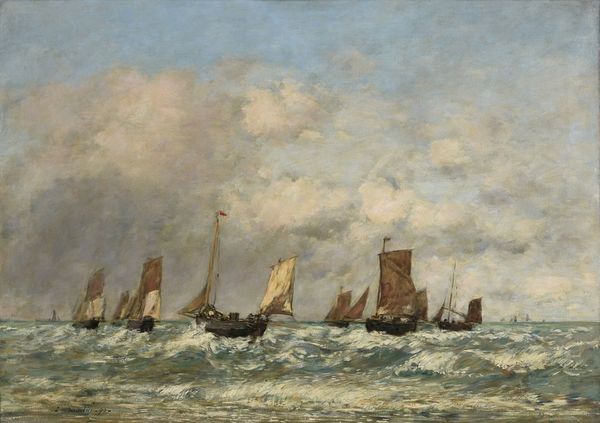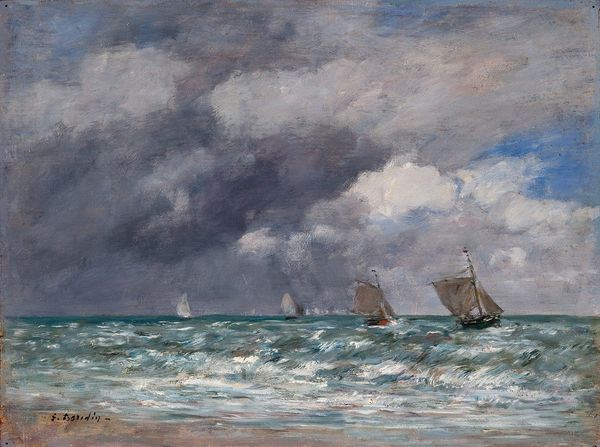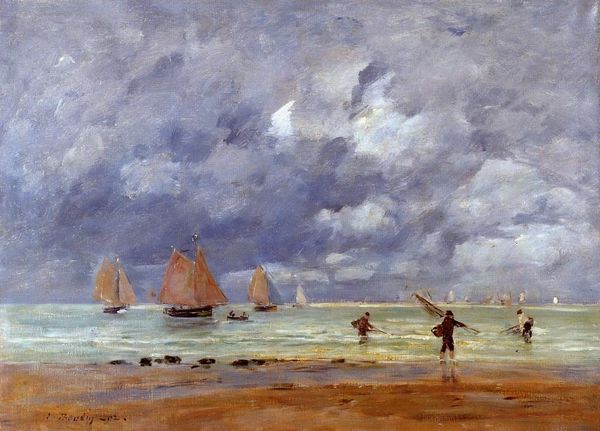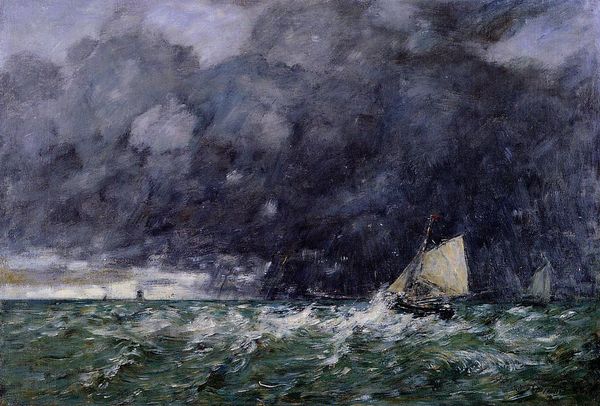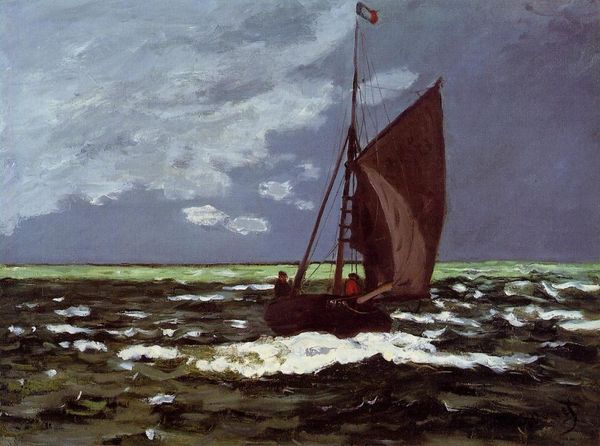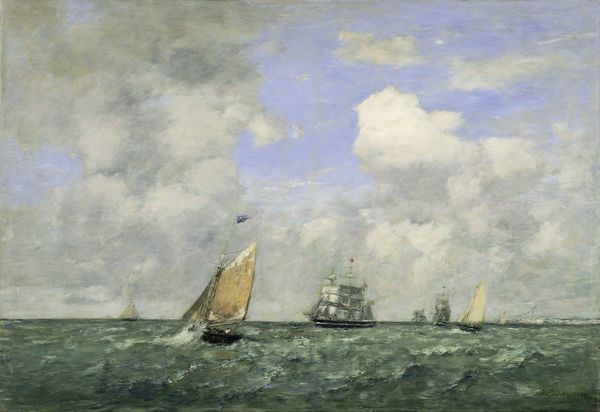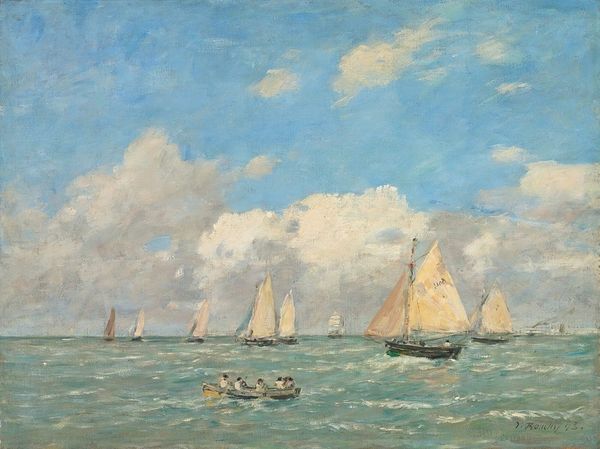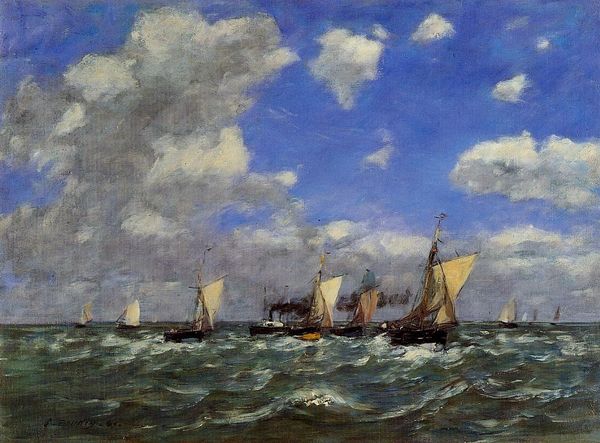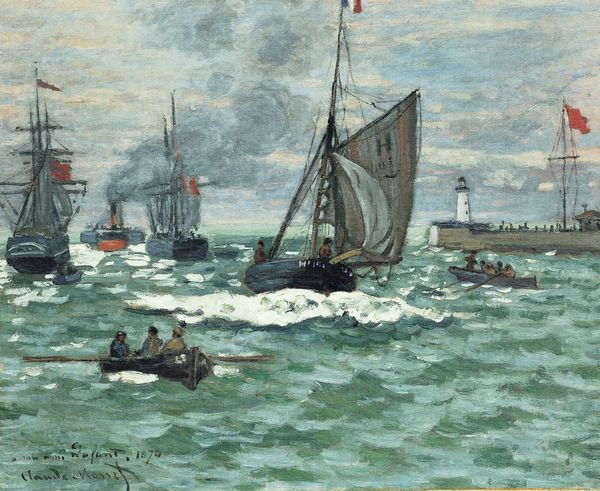
painting, plein-air, oil-paint
#
painting
#
impressionism
#
plein-air
#
oil-paint
#
landscape
#
oil painting
#
water
Copyright: Public domain
Editor: This is "Berck, the Departure of the Boats," an oil painting by Eugène Boudin, seemingly capturing a coastal scene. It feels almost turbulent with those choppy waves and heavy sky. I'm curious, what draws your attention when you look at this piece? Curator: I’m struck by how Boudin uses readily available and relatively cheap oil paint to depict the harsh realities of maritime labor. These aren't leisurely sailboats; they’re working vessels. Think about the physical labor involved in fishing from these small boats, battling the elements. Editor: Absolutely, there’s no romanticising the sea here. The choppy brushstrokes almost convey a sense of instability. Is that relevant? Curator: Indeed. The *plein air* technique itself becomes a reflection of labor, a way to understand Impressionism not as frivolous aesthetics but rather grounded in observation and honest depictions of the working class. These impressionist paintings weren't painted inside in clean, warm studios - they had to fight the elements. Editor: That is a different take on Impressionism. So, by focusing on the conditions of its creation, we gain insight into social dynamics? Curator: Precisely. By analysing the materials, and especially the artist's direct engagement with the working world he's depicting, we can see the artist wasn’t just creating beautiful scenery. The quick brushwork mirrors the urgency of capturing a fleeting moment and it's an early sign of the impact factory production methods have had. Editor: This has shifted my perception of the Impressionist movement as a whole. Curator: Mine too. The boats aren't sailing to pretty shores to collect aristocrats: the fishermen are harvesting from the ocean’s bounty for an emergent proletariat, whose need drove development, production and trade.
Comments
No comments
Be the first to comment and join the conversation on the ultimate creative platform.
